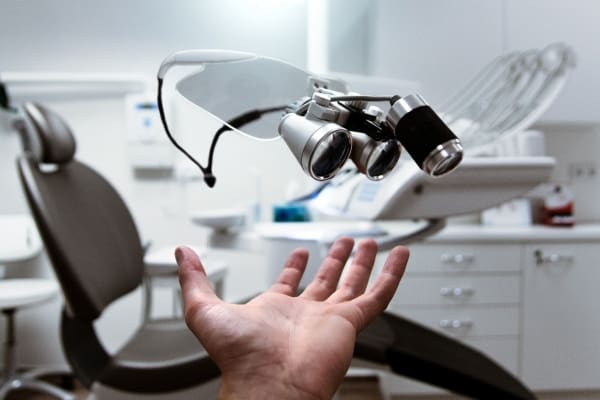
Dentistry has come a long way in the last few decades. From basic tooth extractions to complex root canals, the field of dentistry has seen a lot of advancements. With the help of technology, the future of dentistry is looking bright. In this article, we will explore some of the trends and innovations that are shaping the future of dentistry.
Technological Advances in Dentistry
As technology continues to evolve, it has brought about significant changes in the field of dentistry. With the development of new technologies, dental treatments are becoming more efficient, convenient, and accessible. In this section, we will discuss some of the most promising technological advances in dentistry.
3D Printing
3D printing is one of the most exciting technologies in dentistry. It has revolutionized the way dentists create dental restorations such as crowns, bridges, and dentures. With 3D printing, dentists can create accurate and precise models of a patient’s teeth, which can be used to create custom restorations. This technology has significantly reduced the turnaround time for dental restorations, and patients can now receive same-day restorations.
Artificial Intelligence (AI)
AI is another technology that is transforming dentistry. AI-powered tools can help dentists diagnose oral diseases and plan treatments more accurately. For example, AI-powered software can analyze X-rays and identify potential issues that may be missed by human dentists. AI can also help dentists create personalized treatment plans based on a patient’s unique needs.
Teledentistry
Teledentistry is a technology that allows dentists to provide remote dental care. It has become increasingly popular in recent years, especially during the COVID-19 pandemic. With teledentistry, patients can consult with their dentists from the comfort of their homes, reducing the need for in-person visits. This technology has improved access to dental care, particularly for patients in rural or remote areas.
Digital Dentistry
Digital dentistry is a technology that uses digital tools to improve dental treatments. For example, digital scanners can create accurate 3D models of a patient’s teeth, which can be used to create custom restorations. Digital tools can also help dentists plan treatments more accurately, reducing the risk of errors.
Augmented Reality (AR) and Virtual Reality (VR)
AR and VR technologies are being used in dentistry to improve patient education and reduce anxiety. For example, dentists can use AR and VR tools to show patients what their teeth will look like after a treatment. This technology can help patients better understand their treatments, reducing anxiety and improving treatment outcomes.
Dental Implants and Oral Health
Dental implants have revolutionized modern dentistry, providing a reliable and long-lasting solution for missing teeth. As technology continues to advance, dental implants are becoming even more sophisticated, with new materials and techniques that offer greater accuracy and precision.
Implants
Dental implants are artificial tooth roots that are surgically placed into the jawbone, providing a stable base for replacement teeth. They are typically made of titanium, which is biocompatible and integrates well with bone tissue. Implants can be used to replace a single tooth, several teeth, or even a full arch of teeth.
Materials
Advancements in materials science have led to the development of new implant materials, including zirconia and ceramic. These materials offer several advantages over traditional titanium implants, including improved aesthetics, biocompatibility, and resistance to corrosion.
Accuracy
New technologies such as computer-guided implant placement and digital impressions are improving the accuracy and precision of implant placement. This can lead to better outcomes, with implants that fit more snugly and are less likely to fail.
Diagnoses
Digital imaging technologies such as 3D cone beam CT scans are enabling dentists to diagnose and plan implant treatments with greater accuracy and efficiency. This can help ensure that implants are placed in the optimal position for long-term success.
Tooth Decay
While implants themselves are not susceptible to tooth decay, the surrounding teeth and gums can still be affected by decay and gum disease. Regular dental check-ups and good oral hygiene are essential for maintaining the health of the surrounding teeth and gums.
Crowns
Implants are typically restored with a crown, which is custom-made to match the color and shape of the patient’s natural teeth. New materials such as zirconia and lithium disilicate are improving the strength and durability of implant crowns.
Dentures
Implant-supported dentures are becoming increasingly popular, offering a more stable and comfortable alternative to traditional dentures. These dentures are anchored to the jawbone with dental implants, providing a secure and stable base for replacement teeth.
CAD/CAM
Computer-aided design and manufacturing (CAD/CAM) technology is being used to create custom implant restorations with greater precision and accuracy. This can lead to better outcomes and faster treatment times.
Cosmetic Dentistry
Implants are also being used in cosmetic dentistry to improve the appearance of the smile. By replacing missing teeth and restoring the natural shape and alignment of the teeth, implants can help patients achieve a more attractive and confident smile.
COVID-19 and Dentistry
The COVID-19 pandemic has had a significant impact on the dental industry, resulting in rapid growth in tele-dentistry and other innovative solutions. In this section, we will explore the effects of the COVID-19 pandemic on the dental industry, including patient experience, treatment plans, emergency care, patient care, and precision.
Rapid Growth
The COVID-19 pandemic has accelerated the growth of tele-dentistry, which allows dental professionals to diagnose and treat patients remotely. This technology has become increasingly popular due to the need for social distancing and reduced contact. Tele-dentistry has made it possible for dental professionals to provide care to patients who are unable to visit a dental practice.
Patient Experience
The COVID-19 pandemic has changed the way patients experience dental care. Patients now expect a higher level of safety and hygiene in dental practices. Dental practices have responded by implementing new safety protocols, such as the use of personal protective equipment (PPE), air filtration systems, and increased cleaning and disinfecting procedures.
Treatment Plans
The COVID-19 pandemic has also affected treatment plans. Dental professionals have had to adjust their treatment plans to ensure the safety of their patients. For example, some procedures that generate aerosols, such as drilling, have been postponed or modified to reduce the risk of transmission. Dental practices have also implemented new screening procedures to identify patients who may be at higher risk of COVID-19.
Emergency
The COVID-19 pandemic has highlighted the importance of emergency care in dentistry. Dental practices have had to adapt to provide emergency care while maintaining social distancing and other safety protocols. This has included the use of tele-dentistry to triage patients and reduce the number of patients who need to visit the practice.
Patient Care
The COVID-19 pandemic has also resulted in changes to patient care. Dental practices have had to adjust their procedures to ensure the safety of their patients. This has included the use of PPE, increased cleaning and disinfecting procedures, and changes to the way that patients are seen and treated.
Precision
The COVID-19 pandemic has highlighted the importance of precision in dentistry. Dental professionals have had to adapt to provide precise care while maintaining social distancing and other safety protocols. This has included the use of new technologies, such as digital imaging and 3D printing, to improve the accuracy of treatment.
Laser Dentistry
Laser dentistry is one of the most exciting trends in the field of dentistry. It is a minimally invasive technique that uses lasers to treat a variety of dental problems. Lasers are used to remove decay, whiten teeth, reshape gums, and even perform root canal procedures.
Splints
One of the most significant benefits of laser dentistry is the ability to create custom splints. Splints are used to treat a variety of dental problems, including temporomandibular joint disorders (TMJ). Lasers are used to create a custom fit splint that is comfortable and effective.
Brushing
Laser dentistry can also be used to improve brushing techniques. Lasers can be used to detect areas of the mouth that are not being brushed effectively. This information can be used to improve brushing techniques and prevent future dental problems.
The Future of Dentistry
The dental industry has seen significant advancements in the past few years, and the future of dentistry is looking even brighter. With new trends and innovations, patients can expect better oral care and outcomes. In this section, we’ll explore some of the most promising advancements in the dental industry.
Advancements
The future of dentistry is all about advancements. From 3D printers to digitalization, the dental industry is embracing technology to improve patient care. For example, 3D printers can create dental models quickly and accurately, allowing dentists to create custom-fit appliances like dentures and braces. Digitalization has also made it easier for dentists to share patient information and collaborate on treatment plans.
Dental Models
Dental models are an essential part of the dental industry, and advancements in 3D printing technology have made them even more critical. With 3D printing, dentists can create accurate and detailed dental models quickly and efficiently. This allows them to create custom-fit appliances that are more comfortable and effective for patients.
Bridges
Bridges are a common dental procedure, and advancements in technology have made them more effective and comfortable for patients. For example, clear aligners can now be used to create bridges, which are more aesthetically pleasing than traditional bridges. Additionally, digital software can now be used to design and create bridges, reducing the risk of human error and improving the accuracy of the final product.
Software
Software is playing an increasingly important role in the dental industry, and advancements in this area are making it easier for dentists to provide better patient care. For example, dental software can now be used to create treatment plans and simulate the results of different procedures. This allows dentists to provide more accurate and personalized care to their patients.
Smart Toothbrush
Smart toothbrushes are a new innovation in the dental industry, and they are quickly gaining popularity. These toothbrushes use sensors and artificial intelligence to monitor brushing habits and provide feedback to patients. This allows patients to improve their brushing technique and maintain better oral health.
Access to Dental Care
Access to dental care is a significant issue in many parts of the world. However, with technological advancements in the field of dentistry, it is becoming easier for people to access quality dental care. In this section, we will discuss the various aspects of access to dental care.
Healthcare Providers
One of the primary factors that affect access to dental care is the availability of healthcare providers. In many areas, there is a shortage of dentists and other dental professionals, making it challenging for people to receive the care they need. However, technological advancements in dentistry, such as teledentistry, are making it possible for people to receive dental care remotely. This is particularly helpful for people who live in rural areas or areas with a shortage of dental professionals.
Rural Areas
Access to dental care is particularly challenging for people who live in rural areas. In many cases, people in rural areas have to travel long distances to receive dental care. However, advancements in dentistry, such as mobile dental clinics, are making it easier for people in rural areas to receive dental care. These clinics can travel to remote areas and provide dental care to people who would otherwise have to travel long distances to receive care.
Accessibility
Accessibility is another critical factor that affects access to dental care. People with disabilities or mobility issues may find it challenging to access dental care. However, advancements in dentistry, such as the use of 3D printing to create dental prosthetics, are making it easier for people with disabilities to receive the care they need. Additionally, many dental offices are now equipped with accessibility features such as ramps and wide doorways to make it easier for people with disabilities to access care.
Dental Plan
Another factor that affects access to dental care is dental insurance. Many people do not have dental insurance, making it difficult for them to afford dental care. However, many dental offices offer payment plans or discounts for people without insurance. Additionally, some dental plans offer coverage for preventative care, which can help people maintain good oral health and prevent more serious dental issues from developing.
These emerging technologies are transforming the field of dentistry, improving patient outcomes, and making dental treatments more accessible and convenient. As technology continues to evolve, we can expect even more exciting advances in the field of dentistry.
From modern dental implants, laser dentistry, 3D printing, smart toothbrushes to rapid growth in tele-dentistry and other innovative solutions, dental practices have had to adapt to provide safe and effective care while maintaining social distancing and other safety protocols. As the pandemic continues, it is likely that the dental industry will continue to evolve and innovate to meet the changing needs of patients.
Access to dental care is a significant issue that affects many people. However, with advancements in dentistry and changes in the healthcare industry, it is becoming easier for people to access the care they need. By addressing the various factors that affect access to dental care, we can ensure that everyone has access to quality dental care.



